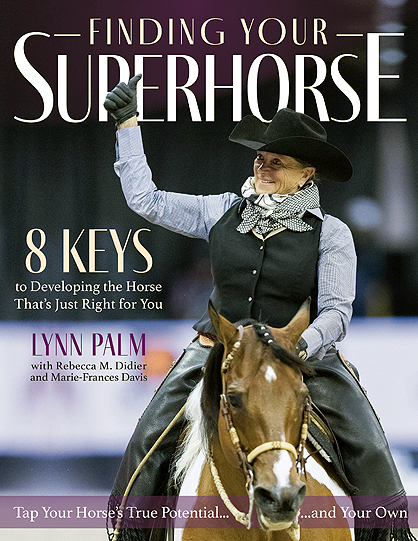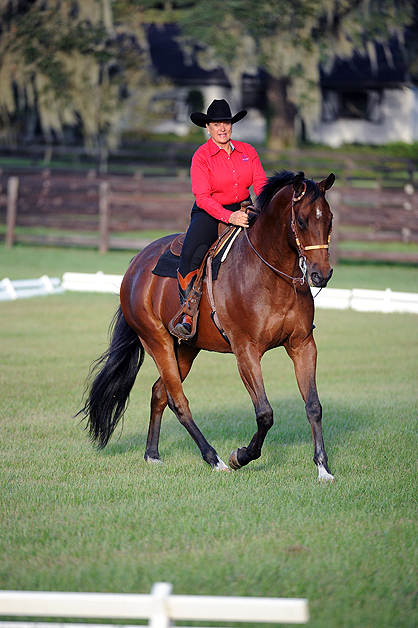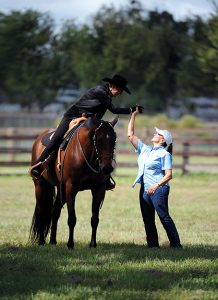Lessons in Longevity – An Excerpt from Lynn Palm
An excerpt from Lynn Palm’s recent book Finding Your Superhorse: 8 Keys to Developing the Horse That’s Just Right for You.
Lessons in Longevity
To me, longevity is about the length of time a horse has quality of life and you have quality of life together. Horses don’t need to be “fried” mentally by the age of three or broken down physically by the age of five. We have the experience and the veterinary, farrier, and bodywork care that should ensure many years of active partnership in whatever disciplines we choose.
My understanding of how important the “big picture” is in a horse’s training (rather than just immediate goals) has built over a lifetime of experience with many different horses. Here are a few of the lessons I’ve learned about variety in training, patience, and listening to each individual horse.
- Vary your training each day or two. Cross-train with under-saddle training aimed toward the goals for the horse: groundwork, riding bridleless, trail obstacles, hill training for fitness, and swimming, if possible.
- Don’t drill your horse. It is true that horses learn through repetition; however, if you drill (for example, ride 20 circles without stopping), you will eventually lose the willingness of your horse. Horses hate drilling! Keep your horse interested in his lesson by changing directions (lateral suppleness) and doing transitions (longitudinal suppleness). Minding this Golden Rule will also help you develop your horse’s concentration for longer sessions over a period of time. Changing direction and doing transitions often teaches the rider to think: think “in front of the horse,” think about being confident, and think about riding with accuracy and precision.
- Train “outside the box.” An arena or a confined area is the place to teach the horse something for the first time. When he understands and can manage the skill, do it “outside the box” where there are new challenges as the horse’s instincts kick in and he becomes more aware of his environment and on high alert. I learned over time that it was harder to have a horse do the same task well outside an arena. I trained my first National and World Champion in the woods of northern Wisconsin for the three months leading up to the competition. My horse was very confident in the ring!
- Listen to your horse. If your horse challenges you, he is trying to tell you something. Use your common sense and try to understand what he could be saying. Figure out what you can try to do differently to get a better result. I always start with a check-in with correct rider position. I know my position weaknesses and try to stop them from happening. Position problems can be as simple as looking down at your horse—when you do this, you will be late to direct your horse with your aids, and this will frustrate him.
- Turn your horse out every day and give him at least one day off per week.
Lynn’s “Golden Rule”
The “Golden Rule” of a training session (transitions—lots of them!) is also the best way to teach a rider to think, evaluate, and improve herself and her horse. Best of all, they help you keep your horse interested in the lesson. Horses (and humans) learn by repetition; however, as I’ve already mentioned, if you drill a horse in the same gait for any length of time, you will lose the horse’s attention, “try,” and interest and willingness to do more for you in the lesson.
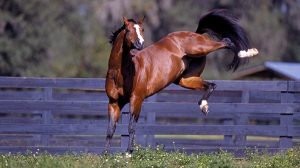
My Royal Lark playing and demonstrating his amazing athleticism during turnout. (Credit: Cappy Jackson)
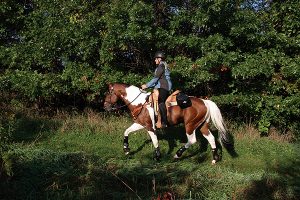
Rugged Painted Lark. I am a proponent for training show horses outside the arena at least twice a week. (Credit: Daniel DeWeese)
Lynn Palm
Lynn is an American Quarter Horse Association judge and holds her USEF R Western Dressage Judge’s License. She continues to compete in both the United States Dressage Federation and the Western Dressage Association of America. Palm’s competition record is second to none, having earned four AQHA Superhorse titles, over 30 AQHA World and Reserve Championships, several AQHA European Championships, more than a dozen WDAA World Championships, 15 USDF All Breed Awards Champions, and most recently the Dressage and Western Dressage Championships at the AQHA World Show.
Reprinted with permission from Trafalgar Square Books / TrafalgarBook.com.
[direct link for online use: https://trafalgarbooks.com/products/finding-your-superhorse]










